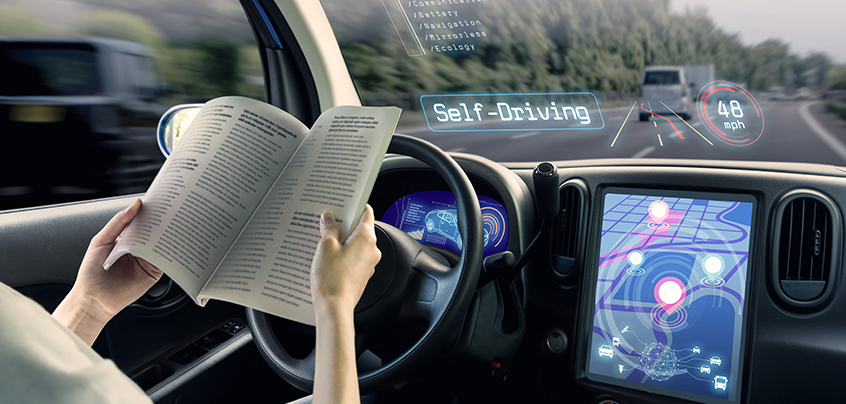



11, April 2019

Advanced driver assistance systems (ADAS) has derived its mark on the market in a short span of time, least in regards by the excellence of the automotive industry, which has evolved to its advanced stage. The technology has its potential roots in the features, of which existence is now a long said past. The term ADAS had struck the brochure just the time when high-end technology emerged in top notch cars. ADAS refers as an effort to convalesce the car’s safety, which is building grounds for million of fatality per year across the globe, conferred by the World Health Organization. This has explained the salutary paradox of developing safety-related technologies, including ADAS around the world.
At present, ADAS is virtually mainstream. The augment in brands and models, together with economic compact cars are offering varied features to propel driver’s security such as from adaptive or vertical cut off lines to the wrong-way driving warning. It is also an foremost example of the gigantic technological interference in the auto industry as well as society at large. In April, Angela Merkel, a German politician announced that carmakers would soon test self-driving cars on Germany’s roads. Moreover, BMW made a statement that their self-driving vehicle advanced in partnership with Intel and Mobileye will be in the market by 2021. In addition, BMW chief executive officer Harald Krüger said at summer news conference in Munich that “at present, the world is stepping at the threshold of a new revolution.”
Technology majorly influences the uptake in the ADAS market but lasting on this brink tremendously rely on the capability to work out the rising engineering restraints, concerning vast propagation of sensors and other equipment, effectively handing out the gathered data and extracting useful and actionable information. These restraints affect athwart domains, in spite of innovation in hardware/software features, engineering restraints are still a concern. However, the key undertaking is to balance out the electronic content and exploit to reach novel, tech-hungry customers, at the same time constraining the cost of the features desired by these consumers.
A classic ADAS application comprises an array of technology, but the four to note concerning the contemporary challenges are sensors, processors, mapping, and software algorithms.
Sensors: This subsystem assembles the data in its proximate surrounding such as approaching cars or pedestrians. The majority of the sensors consists of a constrained range of measurement, making it strenuous in distinguishing amid the “signal” and system “noise.” The challenging environmental conditions like rain or fog make it more difficult for the sensors to trail the moving objects. Nevertheless, key market players are striving for the advancement of individual sensors. They are endeavoring to elevate the performance of the system with superior sensor fusion, articulately combining data from compound sensors. In terms of hardware, however, intersensor communication is a key pain point as it demands higher bandwidth and resolutions to prevent overloading the network.
Processors: EUC (Electronic control units) and MUC (microcontroller units) are vital for maximum ADAS applications, which also includes self-driving. For the ongoing advancement in ADAS, the superior performance of processors is essential, which is enabled by the incorporation of the core logic of more than one processor, superior frequency, and need for low power consumption.
Software algorithms: With the help of sensors input, the algorithms assist the driver or stipulate the active participation in controlling the vehicle, which require compound internally integrated software in the car. Moreover, the sensor fusion developments is leading the ADAS market from embedded software operating on single ADAS-driven ECU to centralized ECUs or MCUs. The global players are converging on designing algorithms that allow more efficient amalgamation of sensor data and processing, preventing slowdown and data load. In addition, they are also prioritizing in building algorithms, allowing safer car navigation and accurately forecast all the possible human actions.
Mapping: A detailed and effective mapping system can be in aid when GPS coverage breaks down in a situation like tunnel travel etc. They stockpile the geographical and infrastructure information with the required updates and transfer it to the onboard sensors to regulate the car’s exact location. The key players and OEMs in the automotive market are contemplating for lower-cost methods to design and conserve these maps. A few of the recent development in solutions is deploying, i.e. mapping cars integrated with 360-degree high-definition cameras and 3-D lasers. Map developers are influencing the data from installed sensors on commercial convoys like FedEx, and GPS data from drivers.
Dynamically aggressive environment
The players in the ADAS market are cognizant that vehicles will be mandated to be equipped with ADAS application in the coming years, and they are well prepared to capture the potential growth. This will boost tremendous development in the automotive industry, such as top high-tech players along with semiconductor companies are leveraging the opportunity in the ADAS market. For instance, NVIDIA, Intel, Qualcomm, Sony, Panasonic, and Samsung are striving to utilize the possible opportunity, along with sensors, MCU and ECU, etc. Also, other mid-size, small and even startups are striving to capture market share, which includes IntelliVision, Hawk-Eye Innovations, and GestureTek. On the other hand, OEMs are willingly collaborating with the semiconductor companies and other secondary suppliers for technology that aid in the advancement of ADAS. Also, these secondary suppliers are aggressively dogging for mergers and acquisitions to fulfill the requirements for ADAS such as software.

Prevalent cases of terrorist attacks in today’s world is increasing the need for severe standards of security for public safety, and the global market for biometric technology scrupulously accommoda..
Prevalent cases of terrorist attacks in today’s world is increasing the need for..